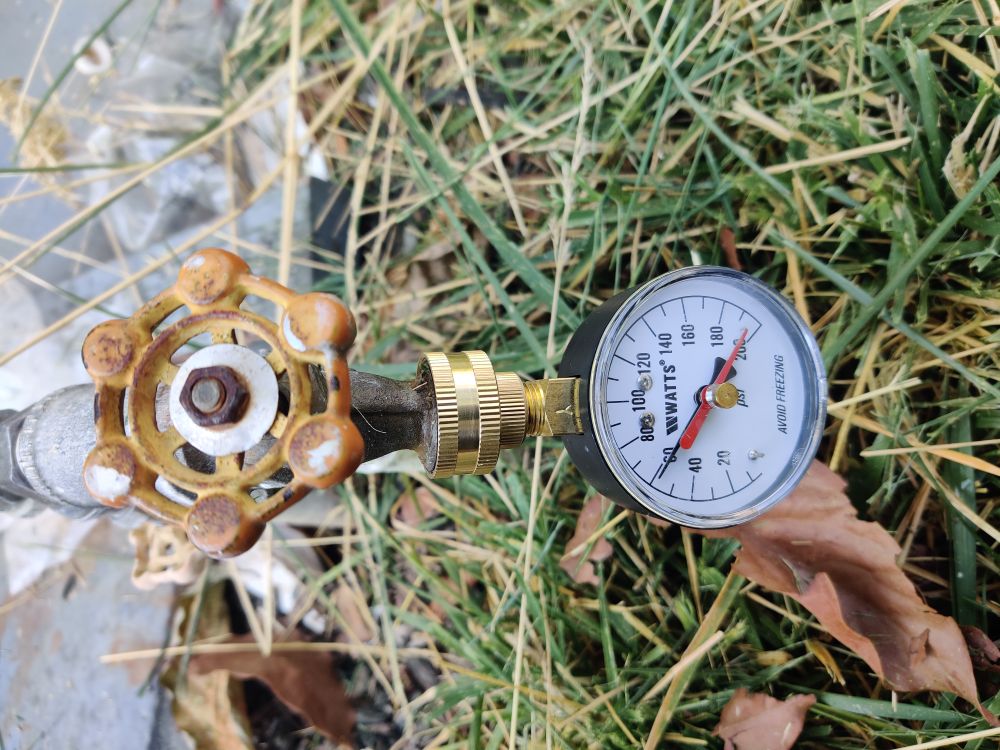[EDIT2] (at top to make sure visibility) All good, as explained in one of the posts. I shouldn’t expect pressure regulator to work directly at faucet. (Use tee or splitter) Here is video https://youtu.be/gp4aquT19LA
[Just started looking into drip irrigation] I’m using rainbird 25PSI pressure regulator along with pressure guage. (https://www.amazon.com/Rain-Bird-HT07525PSI-Irrigation-Regulator/dp/B0049C5FZA)
Pressure guage measures about 70PSI without regulator (directly at garden faucet), however this doesn’t really change even after using pressure regulator.
Am I misunderstanding pressure regulator? or is guauge/regulator broken?
[EDIT] Here is what I’m talking about (in both cases it reads about 60PSI):




oh didn’t try it with hose, will test it (mostly tomorrow). I don’t really want permanent pressure guage, just making sure pressure is good before I install tubing.
Keep me posted! I’m very curious now. but yeah, without knowing anything about the internals, it’s possible the mechanisms needs some modicum of flow to regulate. If it’s a simple valve seat on a spring, I could see the downstream section reaching upstream pressure before spring drives it shut. The downstream assembly in this case is so small and totally sealed, so it wouldn’t take much for the air in it to be at supply pressure.
If that’s the case it’s nothing to worry about (probably). It’ll mean there’s a momentary spike to every time it’s opened, which could walk loose your barb fittings over time, but any flow distribution from the drip lines themselves will lessen that spike.
The hose test is the simplest “yup, there’s less flow and pressure” (if you wanted to be a real jackass about it you could make sure the hose is bent the same and at the same elevation in both cases, and track how far the arc travels). Another thing you could do is 1) open the upstream supply decently but not full blast (you want it open enough to ensure it’s not limiting flow it’s self but you won’t need the full flow it can provide) then 2) loosen the gauge to the point where it’s leaking decently.
You should a rapid but not instantaneous pressure drop to the 25psi of the regulator. Again it’s possible the mechanism requires flow, but in a perfect world you’d be able to tighten the gauge back up and then it would NOT rise back to supply pressure.
This all assumes it’s not simply malfunctional.
Yes it just needed guage in tee and regulator needs flow.
Awesome. Glad it worked out. Thanks for the followup!